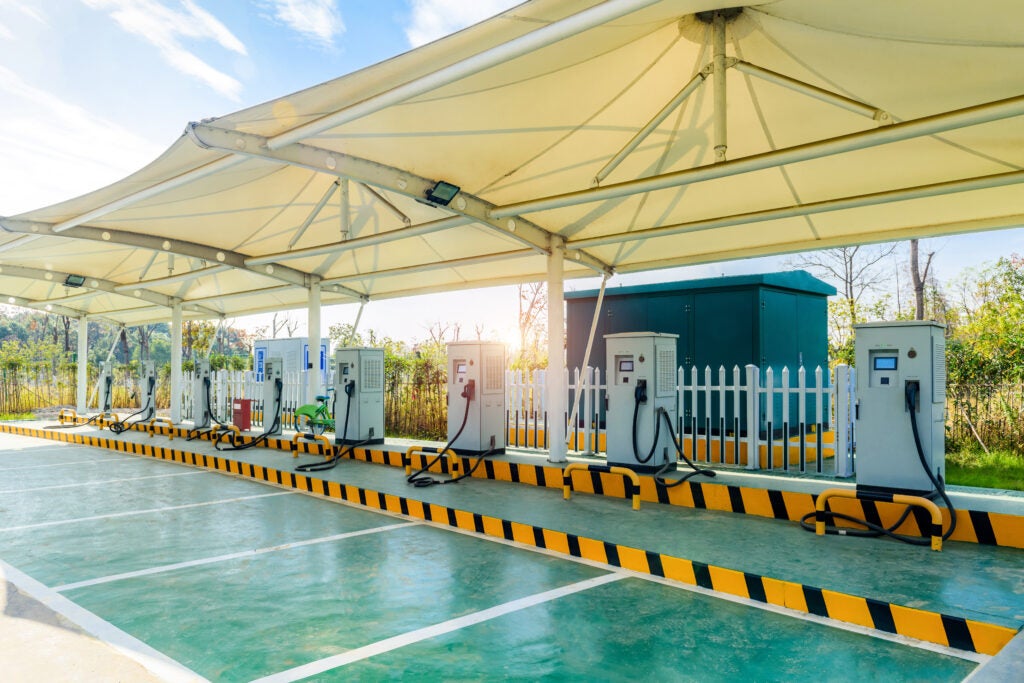- After being illegally withheld, the NEVI program is again moving forward but DOT’s inadequate provisional guidance will not support effective and successful charger deployment.
- EDF recommends that as states resubmit and deploy their plans, they lean into the previous administration’s stronger guidance wherever feasible and legally possible.
It has been a tumultuous year for the National Electric Vehicle Infrastructure Grant Program. The year began with the Trump administration instituting an effective freeze of NEVI funds followed by a lawsuit challenging this unlawful action, initiated by more than a dozen state attorneys general and supported by numerous environmental groups, to resume the flow of funds. As a result of the lawsuit, a federal judge issued a preliminary injunction in favor of the states, thereby resuming the flow of NEVI funds for many of the state plaintiffs.
The National Electric Vehicle Infrastructure Program is back on the road Share on X
Last week the Trump administration announced revised provisional NEVI guidance — a bare bones version of the program’s June 2023 guidance. The guidance was issued as an “Interim Final Rule,” meaning that it took effect immediately without the required public notice and input. The Department Of Transportation is accepting comments on the interim final rule through August 27, 2025. The guidance instructs states to submit plans that encompass all unobligated funds.
The new guidance repeals nearly all state EV Infrastructure Deployment plan requirements that were designed to ensure NEVI funds are spent rigorously and consistently with congressional intent. However, nothing in the new guidance prevents the development of more robust state plans, in fact the guidance specifically mentions that states may re-submit their previously approved plans for consideration. Since the guidance only defines a “floor” for what grantees must include in their plans, states can and should continue to deploy their previously conceived plans.
Now more than ever, states are leading the charge in the development of a nationwide charging network. In order to continue the rapid build-out and expansion of that network, NEVI program grantees must continue to deliver the higher standards laid out in earlier guidance.
Specifically, the following provisions in their state plans are important to support rigorous infrastructure build out:
States should continue with the 50-mile maximum spacing requirement laid out in earlier guidance
Earlier issued NEVI guidance had several requirements directly related to optimizing current and future EV drivers’ experience. One such requirement was that NEVI charging stations could be at most 50 miles apart. This maximum regular interval for charging stations ensures that states provide consistent coverage along Alternate Fuel Corridors, providing EV drivers a predictable and convenient charging experience even across state lines. The omission of this requirement in the new guidance is particularly harmful because previous guidance already provided flexibility for states to seek specific exemptions from the 50-mile requirement. EDF encourages states to continue to adhere to it to reduce drivers’ range anxiety and encourage efficient charger utilization.
States should keep connecting with communities
DOT’s bare bones guidance removes several important directives related to community engagement. In the June 2023 guidance, states were tasked with considering “the need for publicly available EV charging infrastructure in rural corridors and underserved or disadvantage communities.” Furthermore, through the complementary Justice40 Initiative, states were encouraged to prioritize a certain percentage of benefits in disadvantaged communities.
The new provisional guidance still requires NEVI to complete a report on community engagement activities, but the recommendations don’t offer a road map for how to do this effectively. NEVI grantees should continue to prioritize engaging communities who have been overlooked or deprived of a safe and healthy environment in the past, particularly rural and Tribal communities. EDF would also recommend that states prioritize meaningful engagement of residents in the energy decisions that impact them.
States should seek to achieve multiple transportation electrification goals
Earlier NEVI guidance focused the program’s funds on the build-out of a national vehicle charger network primarily for light-duty vehicles. States have flexibility to build out chargers to support the deployment of medium- and heavy-duty vehicles as well, and they should explore how NEVI funds can also be utilized to facilitate the electrification of the vehicles most detrimental to public health.
States should continue to think holistically when deploying NEVI stations
In order to build a functional and thriving national charging network, it’s vital for states to consider broader infrastructure implications and gaps. Unfortunately, the latest NEVI guidance removes requirements to address “consumer protections, emergency evacuation plans, environmental siting, resilience and terrain considerations.”
States cannot afford to gloss over the impact of increasingly prevalent extreme weather events in infrastructure planning. Rather, states should continue to consider their unique geographies, climate, residents and infrastructure needs in their NEVI plans.
Finally, states should continue to pursue co-locating distributed energy resources and other clean energy technologies, such as managed charging, which benefits the grid and consumer affordability.
By holding themselves to higher standards, prioritizing equitable access and planning for resilience, states can ensure that NEVI funding achieves its original vision. If we stay the course, the NEVI program can deliver the lasting benefits that drivers, businesses and communities across the country are counting on.


